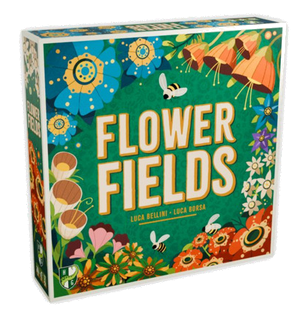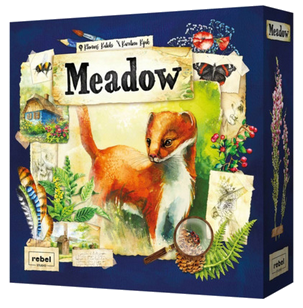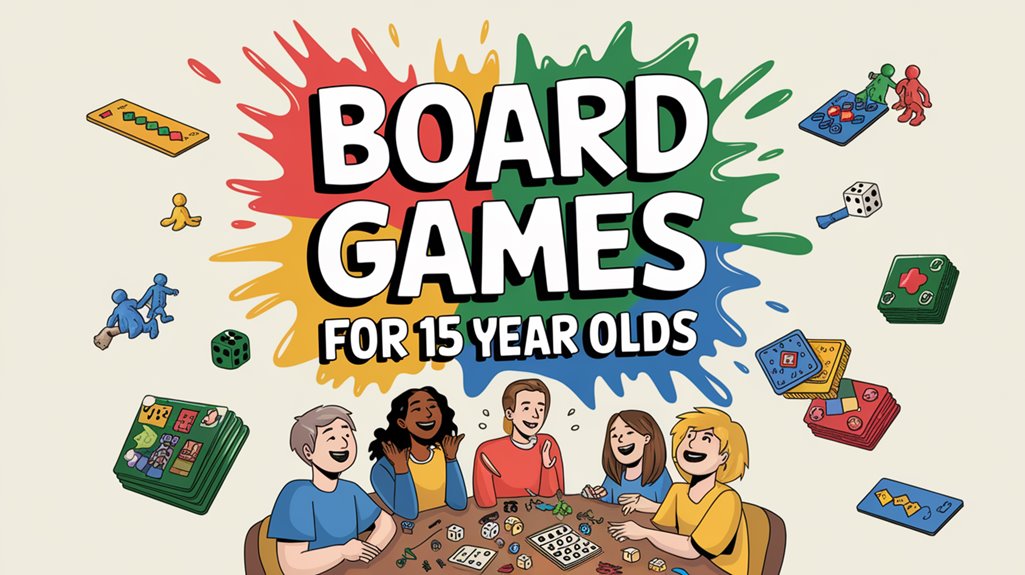Flower-themed board games blend strategic depth with botanical aesthetics through mechanics like tile placement, resource management, and pattern building. Players cultivate gardens or arrange bouquets while competing for limited resources across varied scoring paths. Visually appealing elements enhance gameplay without compromising tactical complexity.
Key Takeaways
- Flower-themed board games combine botanical aesthetics with strategic depth through placement mechanics, resource management, and multiple scoring paths.
- Popular titles include Flower Fields, Gartenbau, Meadow, and Botanicus, each offering unique gardening experiences and mechanics.
- Players typically compete by collecting flowers, completing garden layouts, and creating synergistic tile placements for bonus points.
- These games balance competitive elements with beautiful visuals, allowing strategic freedom while adapting to opponents’ garden configurations.
- Thematic integration of flora and fauna enhances gameplay through mechanics like bee management and seasonal bouquet composition.
Flower Gardening Tabletop Gems
While the flower gardening genre has bloomed into a diverse category within tabletop gaming, several standout titles offer compelling strategic depth beneath their aesthetic allure. These flower themed board games combine visual splendor with subtle gameplay mechanics:
- Flower Fields – Employs competitive tile-placement across three seasons, with scoring mechanisms tied to area control and row/column completion
- Gartenbau – Features strategic tile placement focused on garden cultivation, requiring spatial planning for ideal scoring opportunities
- Meadow – Utilizes card drafting with watercolor illustrations, where goal achievement drives point accumulation through tactical selection
- Botanicus – Implements economic systems and set collection for experienced players, with resource management dictating garden development
For players seeking strategic freedom, these titles deliver substantive decision trees while maintaining their horticultural themes, each offering distinct competitive approaches to garden development.
Flower Fields by Horrible Guild

Petals of Strategic Beauty
Beyond garden simulation, flower-themed board games offer players a bouquet of strategic options that blend tactical depth with botanical aesthetics. Among the best board games in this genre, titles like Flower Fields and Gartenbau showcase sophisticated tile placement mechanics where players compete for points while creating visually stunning gardens.
Resource management and set collection form the core of games such as Botanicus and Meadow, providing multiple paths to victory through careful planning. Games like Floriferous and Cascadia balance accessibility with strategy through light mechanics and quick playtimes, making them ideal for spontaneous gaming sessions. Meanwhile, Evergreen and Lotus introduce distinctive player interaction systems that demand adaptive strategy.
These games harmonize competitive elements with artistic beauty, exemplified by Meadow’s watercolor illustrations that enhance the strategic experience beyond mere gameplay.
Meadow’s Wildlife Collection Strategy
The intricate ecosystem of Meadow extends beyond floral arrangements into a thorough wildlife collection system that forms the game’s strategic core. Players navigate a shared draft pool, selecting animal cards that complement their developing tableau while denying opponents valuable opportunities.
Success hinges on recognizing synergies between wildlife cards and their habitats, as completing sets yields substantial points. Unlike many themed board games, Meadow demands adaptive play – rigidly adhering to a single collection strategy often proves ineffective as card availability shifts throughout gameplay.
Savvy players monitor opponents’ tableaus to anticipate their needs and potentially block key acquisitions. The wildlife cards’ varied scoring conditions reward thoughtful combinations rather than mere accumulation, creating tension between pursuing personal objectives and disrupting rivals’ carefully constructed ecosystems.
Verdant’s Houseplant Puzzles
Unlike Meadow’s wildlife-focused ecosystem, Verdant challenges players with spatial puzzles centered around houseplant cultivation and room decoration. The game rewards strategic positioning, requiring participants to optimize their indoor gardens for maximum points.
Players navigate a clever puzzle system where each houseplant carries unique growth requirements and scoring opportunities. The board interplay creates tension between immediate benefits and long-term strategy as gardens develop across the 30-45 minute playtime. Supporting 1-4 players, Verdant offers both competitive multiplayer sessions and thoughtful solo experiences.
What distinguishes this entry in the botanical board games category is its accessible depth—players must balance plant placement, light conditions, and decorative elements within a compact decision space. The houseplant theme serves not merely as aesthetic dressing but as fundamental mechanical infrastructure, creating a relaxing yet intellectually stimulating experience for strategy enthusiasts.
Floriferous’ Seasonal Bouquet Battles
From houseplant optimization to vibrant flower arrangement, players shift their botanical focus in Floriferous, where seasonal bouquet composition drives competitive gameplay. This card game employs a draft mechanism allowing participants to select from a shared garden display or draw fresh options, strategically building arrangements for maximum points.
Players compete by assembling sets of flowering cards adorned with stunning artwork, making decisions that balance immediate scoring opportunities against long-term collection goals. The 30-minute playtime guarantees quick, accessible sessions without sacrificing strategic depth. Success hinges on anticipating opponents’ moves while pursuing personal objectives.
Floriferous ranks among the best flower-themed card games for its elegant balance of tactics and accessibility. The seasonal framework adds natural progression to gameplay, rewarding forward planning while maintaining the freedom to adapt strategies as the garden display evolves.
Miyabi’s Garden Tower Challenge
Raised garden towers rise strategically in Miyabi, where competitive players build stacked tile arrangements to craft ideal Japanese zen gardens. Though not a card game, Miyabi rewards tactical planning as higher stacks yield greater point values, pushing players to construct vertically while simultaneously fulfilling various scoring criteria.
The game’s core challenge emerges from balancing immediate tactical advantages against long-term strategic positioning. Players must constantly evaluate tile placement opportunities, weighing height benefits against specific scoring conditions. The beautifully illustrated tiles enrich the contemplative nature of this spatial puzzle, creating an immersive experience for 1-4 participants aged 8 and above.
Miyabi encourages freedom in garden creation while imposing thoughtful constraints that demand critical analysis of each move, appealing to families and casual gamers seeking both aesthetic satisfaction and strategic depth.
Flower Fields Garden Layout
In Flower Fields, each player tends to an empty garden layout where strategic tile placement forms the foundation of gameplay. This engine building game unfolds across three Seasons, with players selecting and connecting Flower tiles to expand their garden strategically.
The placement mechanism requires new tiles to connect to existing ones, creating color areas that score points multiplied by Bee tokens placed within them. Thoughtful arrangement becomes crucial as players balance immediate scoring opportunities against long-term strategic positioning.
Completing full rows and columns yields additional points, encouraging players to develop thorough garden designs rather than isolated color clusters. The competitive nature of tile selection forces players to monitor opponents’ gardens, potentially adapting strategies to claim high-value Flowers before rivals can secure them. This spatial puzzle element adds considerable depth to the garden-building experience.
Botanical Tile Collection Mechanics
Strategic tile acquisition forms the cornerstone of flower-themed board games, where players compete to collect and place botanical tiles representing various flora species. Games like Flower Fields and Gartenbau implement sophisticated drafting systems where players must carefully connect tiles to existing garden formations, balancing immediate scoring with long-term strategic positioning.
| Mechanic | Strategic Implementation |
|---|---|
| Drafting | Select premium tiles before opponents |
| Placement | Connect to existing garden elements |
| Set Collection | Gather matching flower varieties |
| Area Scoring | Maximize Bee placement in large zones |
| Row Completion | Fill columns/rows for bonus points |
The card-driven nature of collecting flowers often requires players to manage limited resources while expanding their botanical displays. Successful strategies typically involve creating synergies between tile placement and supplementary mechanics like Bee management, enabling freedom to pursue multiple scoring paths while adapting to opponents’ garden configurations.



